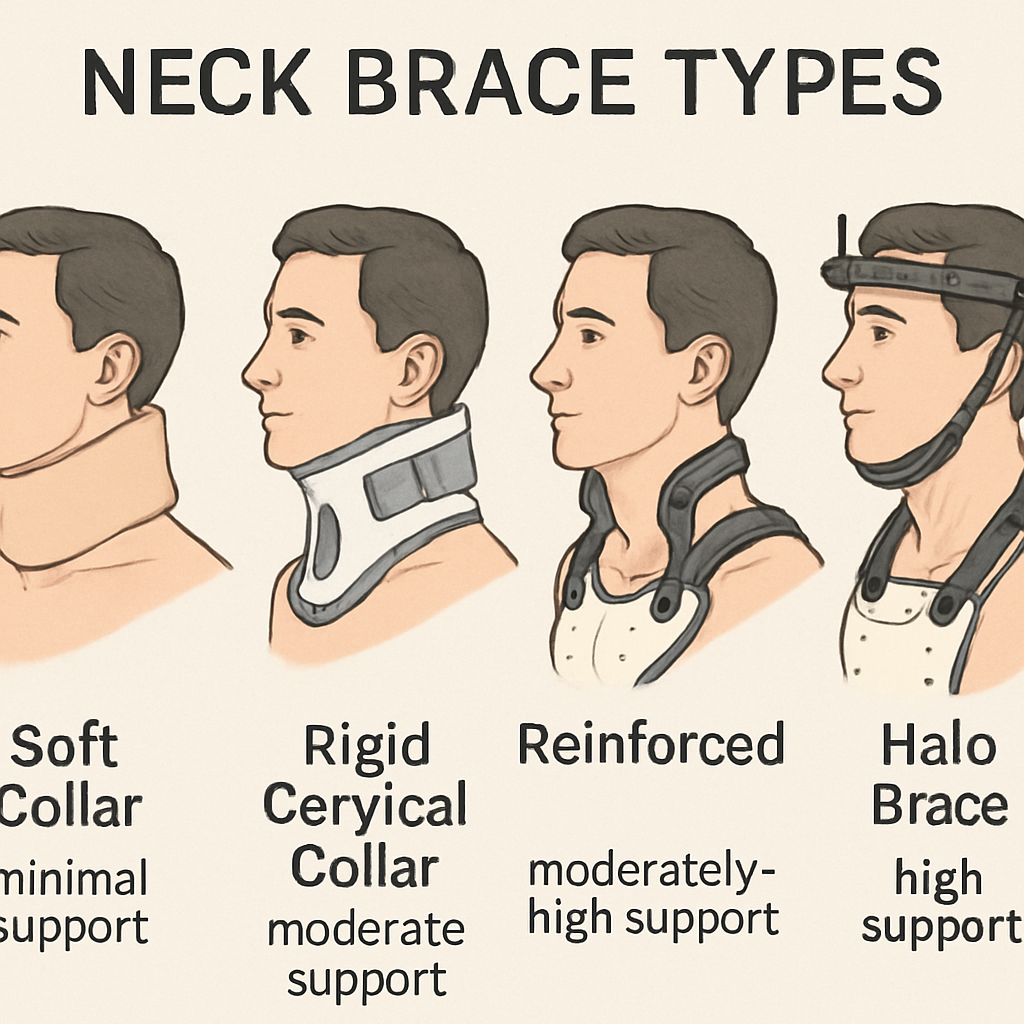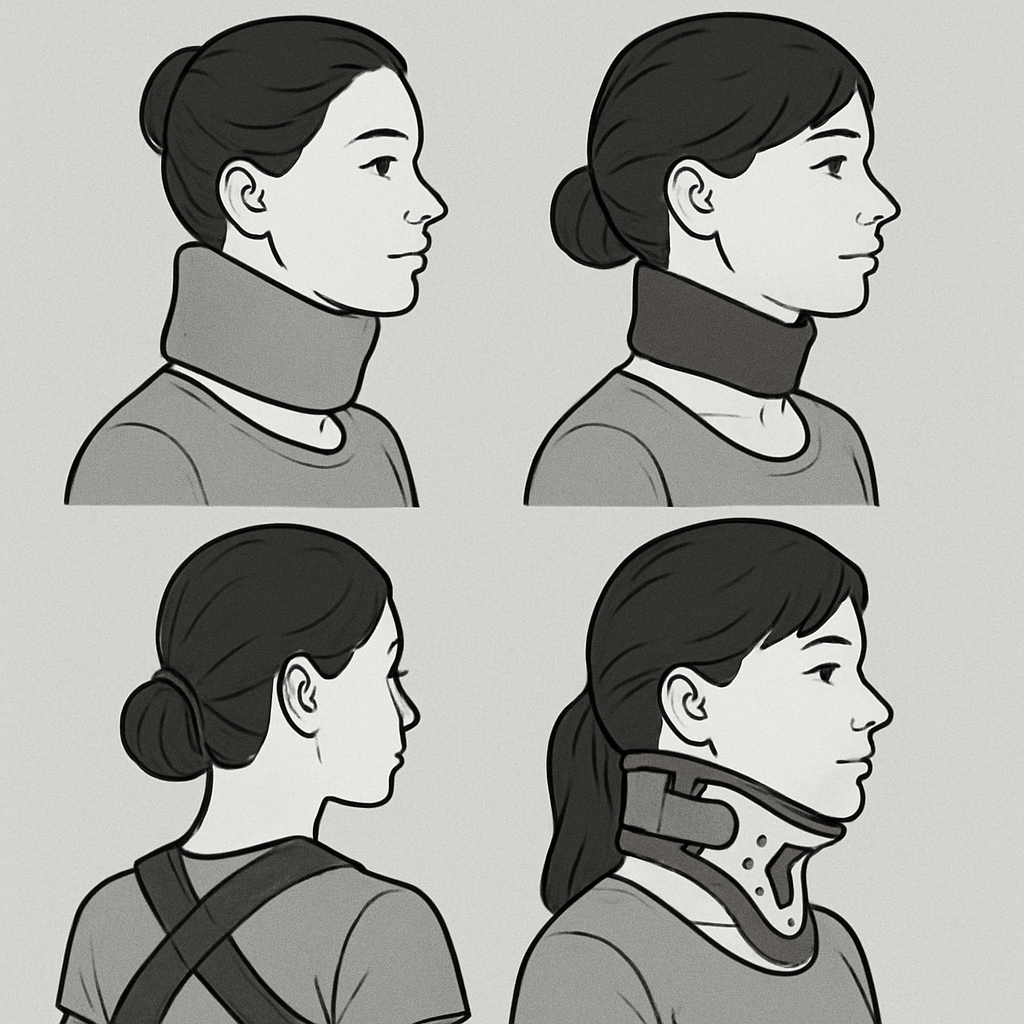Improving posture is crucial for overall health and well-being. Poor posture can lead to neck and back pain.
A neck brace for posture can be a helpful tool. It supports the cervical spine and encourages proper alignment.
These braces are designed to retrain muscles and improve posture habits. They can be used temporarily to aid in posture correction.
Choosing the right neck brace is essential for comfort and effectiveness. Different types are available to suit individual needs.
In this guide, we will explore how neck braces can improve posture. We will also discuss how to select the best brace for you.
 Despite their benefits, it’s crucial to use them wisely. Over-reliance may lead to muscle weakening. Therefore, consulting a healthcare provider is advisable. They can provide guidance on correct use and duration.
Despite their benefits, it’s crucial to use them wisely. Over-reliance may lead to muscle weakening. Therefore, consulting a healthcare provider is advisable. They can provide guidance on correct use and duration.
 Before choosing a brace, consider your specific posture needs. A healthcare professional can help determine the best type for effective improvement.
Before choosing a brace, consider your specific posture needs. A healthcare professional can help determine the best type for effective improvement.
 by Kajetan Sumila (https://unsplash.com/@kajtek)
Choosing a neck brace tailored to your needs can maximize these benefits. Consider consulting a healthcare expert to ensure the right fit and usage.
by Kajetan Sumila (https://unsplash.com/@kajtek)
Choosing a neck brace tailored to your needs can maximize these benefits. Consider consulting a healthcare expert to ensure the right fit and usage.
 by Hala Al-Asadi (https://unsplash.com/@urbanlens20)
Consulting a healthcare professional can also guide you in making the best choice. Their expertise can pinpoint the most beneficial options tailored to your needs.
by Hala Al-Asadi (https://unsplash.com/@urbanlens20)
Consulting a healthcare professional can also guide you in making the best choice. Their expertise can pinpoint the most beneficial options tailored to your needs.
Understanding the Role of a Neck Brace for Posture
Neck braces play a pivotal role in posture correction. They provide necessary support to the cervical spine. This support helps to align the neck properly. By maintaining proper spinal alignment, these braces alleviate discomfort. Misalignment often leads to both neck and back pain. Neck braces serve more than a support function. They aid in retraining muscles to hold the neck correctly. This training promotes better posture over time. Different features make neck braces useful:- Supports the cervical spine
- Promotes spinal alignment
- Reduces neck and back pain
- Helps retrain muscles
 Despite their benefits, it’s crucial to use them wisely. Over-reliance may lead to muscle weakening. Therefore, consulting a healthcare provider is advisable. They can provide guidance on correct use and duration.
Despite their benefits, it’s crucial to use them wisely. Over-reliance may lead to muscle weakening. Therefore, consulting a healthcare provider is advisable. They can provide guidance on correct use and duration.
Types of Neck Braces for Posture Correction
Neck braces come in several types to meet different needs. Each type offers unique features for specific posture issues. Soft collars, rigid braces, and inflatable options are the most common. Soft collars offer gentle support. They’re perfect for minor posture improvement needs. These are often made from foam for comfort. Rigid braces provide significant support. They’re constructed from plastic for those with more severe alignment problems. They restrict movement to ensure proper posture. Inflatable neck braces are adjustable for comfort and support. These allow users to find their ideal pressure level. They offer a customizable fit that suits varying needs. Popular neck brace types include:- Soft collars
- Rigid braces
- Inflatable options
 Before choosing a brace, consider your specific posture needs. A healthcare professional can help determine the best type for effective improvement.
Before choosing a brace, consider your specific posture needs. A healthcare professional can help determine the best type for effective improvement.
Benefits of Using a Neck Brace for Posture
A neck brace can be a simple yet effective tool for improving posture. One of the main benefits is reducing neck and back pain. It achieves this by supporting the cervical spine and encouraging proper alignment. Wearing a neck brace also helps in retraining muscle memory. By keeping the neck in a correct position, it encourages long-term posture improvements. This can lead to lasting positive habits even when the brace is not worn. Additionally, a neck brace provides consistent reminders to maintain good posture. This increased awareness can aid in preventing further strain or injury. Over time, using a neck brace can improve both health and confidence. Benefits include:- Alleviating neck and back pain
- Retraining muscle memory
- Increasing posture awareness
 by Kajetan Sumila (https://unsplash.com/@kajtek)
Choosing a neck brace tailored to your needs can maximize these benefits. Consider consulting a healthcare expert to ensure the right fit and usage.
by Kajetan Sumila (https://unsplash.com/@kajtek)
Choosing a neck brace tailored to your needs can maximize these benefits. Consider consulting a healthcare expert to ensure the right fit and usage.
How to Choose the Right Neck or Back Brace for Neck Posture
Selecting the perfect neck or back brace requires attention to several factors. Firstly, consider the type of posture issue you experience. Different braces cater to specific posture problems, so identifying your needs is crucial. Comfort and fit are equally important when choosing a brace. A poorly fitting brace can lead to discomfort or even worsen posture issues. Look for adjustable straps and check if the material is breathable for extended wear. Lastly, consider the quality and manufacturer reputation. Reading online reviews and testimonials can be helpful. Make sure the brace is made from durable materials to ensure longevity and effectiveness. Consider these factors:- Type of posture issue
- Comfort and fit
- Quality and manufacturer reputation
 by Hala Al-Asadi (https://unsplash.com/@urbanlens20)
Consulting a healthcare professional can also guide you in making the best choice. Their expertise can pinpoint the most beneficial options tailored to your needs.
by Hala Al-Asadi (https://unsplash.com/@urbanlens20)
Consulting a healthcare professional can also guide you in making the best choice. Their expertise can pinpoint the most beneficial options tailored to your needs.
Tips for Effective Use of a Posture Correction Brace
To maximize the benefits of a posture correction brace, it’s important to use it consistently. Regular wear helps reinforce proper alignment. Gradually increase the time spent wearing the brace as your body adjusts. Properly fitting the brace is essential for comfort and efficacy. Ensure that it’s snug but not too tight. An ill-fitting brace can cause discomfort or limit movement, hindering its effectiveness. Pairing your brace use with posture exercises can enhance results. Combine these two strategies for optimal improvement. Exercise aids in strengthening the muscles supporting your spine. Consider these tips for effective use:- Wear consistently
- Ensure proper fit
- Combine with exercises
Combining a Neck Brace with Other Posture Improvement Strategies
Using a neck brace can be part of a holistic approach to better posture. It’s most effective when combined with other strategies. Simple lifestyle changes enhance the benefits of wearing a brace. Consider ergonomic adjustments at your workstation. Ensure your chair and desk promote proper alignment. This reduces strain on your neck and back. Incorporating regular exercise into your routine is also crucial. Strengthening your core and back muscles supports spinal health. Flexibility exercises increase range of motion. Some strategies to integrate with a neck brace include:- Ergonomic desk setup
- Core strengthening exercises
- Regular stretching routines
Precautions and When to Consult a Professional
While neck braces are helpful, they require careful use. Over-relying on them can lead to muscle weakening. Avoid wearing a neck brace continuously without consulting a professional. If you experience discomfort or skin irritation, reassess your use. Discontinue if persistent issues occur. Consulting a healthcare provider ensures you choose the appropriate brace for your needs. Important considerations include:- Monitoring for discomfort or irritation
- Consulting if posture issues persist
- Ensuring the brace is not used excessively